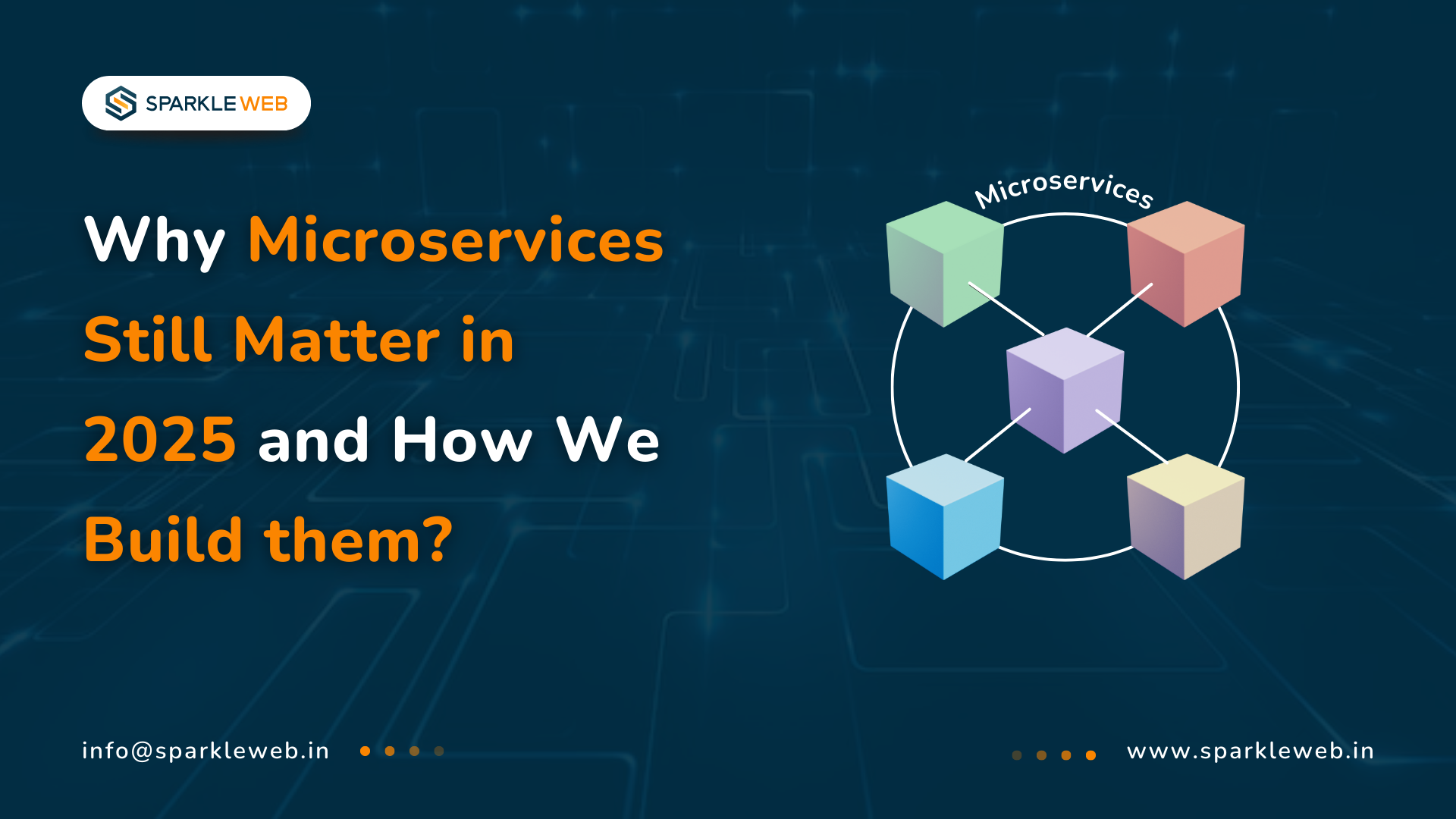-
What microservices are
-
Why they still matter in 2025
- How we build strong and smart microservice-based systems
- Why this approach is a great fit for your next big software project
What Are Microservices?
-
All in one piece (called a monolithic app)
-
Broken into small parts (called microservices)
-
The app is split into many small, separate services
-
Each service does one job only (like user log-in, payment, or sending emails)
- These services talk to each other using simple ways like REST APIs or message queues
- If one service stops working, the others still keep running
Why Microservices Still Matter in 2025
1. Easy to Scale
-
If your payment service is getting lots of traffic, just add more power to that service.
-
No need to change the rest of the app.
2. Faster Development
-
One team builds the login service
-
Another team builds the cart service
3. Better Resilience
-
If the email notification service is down, users can still log in and buy things.
-
This means better uptime and happy users.
4. Use the Right Tools for Each Job
-
We might use .NET Core for secure user login
-
And Node.js for fast data tracking
5. Perfect for the Cloud
-
You can deploy each service in its container (like a small box)
-
You can easily manage services with Kubernetes
- You can even go serverless if needed
How We Build Microservices in 2025
1. Domain-Driven Design (DDD)
- In a hospital system, domains might be patients, appointments, and billing
2. API Gateways and Service Mesh
-
Secure the communication
-
Track performance
- Catch problems early
3. Using Docker and Kubernetes
-
Fast deployment
-
Easy updates
- Auto-scaling when needed
4. Event-Driven Communication
-
RabbitMQ
-
Kafka
- Azure Service Bus
5. CI/CD for Fast Releases
-
Test your code
-
Build the project
- Deploy to staging and live servers
6. Monitoring and Logs
-
Prometheus (for checking performance)
-
Grafana (for beautiful dashboards)
- ELK Stack (to check error logs and user activity)
Real-World Examples Where Microservices Help
E-commerce Platforms
-
Cart
-
Inventory
- Payment
- Order tracking
Healthcare Systems
-
Storing patient records
-
Booking appointments
- Handling billing
FinTech Apps
-
Secure login
-
Processing payments
- Creating reports
Microservices in 2025: Key Numbers
-
89% of enterprise apps are using or planning to use microservices (IDC Report 2024)
-
Companies using microservices release software 3 times faster than others (DORA Report 2023)
- Microservices are growing by 25% every year, driven by cloud usage
Conclusion
In 2025, building a software system that is fast, flexible, and ready for growth is more important than ever. Microservices are not just a trend, they are the best way to build modern apps that can handle the needs of today and tomorrow. At Sparkle Web, we know how to build microservices the right way. Whether you are starting something new or looking to upgrade your old system, our team is here to help. Let’s work together to build the next big thing, something your users will love and your business will be proud of. Ready to scale your project with microservices? Let’s talk today.



Dipak Pakhale
A skilled .Net Full Stack Developer with 8+ years of experience. Proficient in Asp.Net, MVC, .Net Core, Blazor, C#, SQL, Angular, Reactjs, and NodeJs. Dedicated to simplifying complex projects with expertise and innovation.
Reply